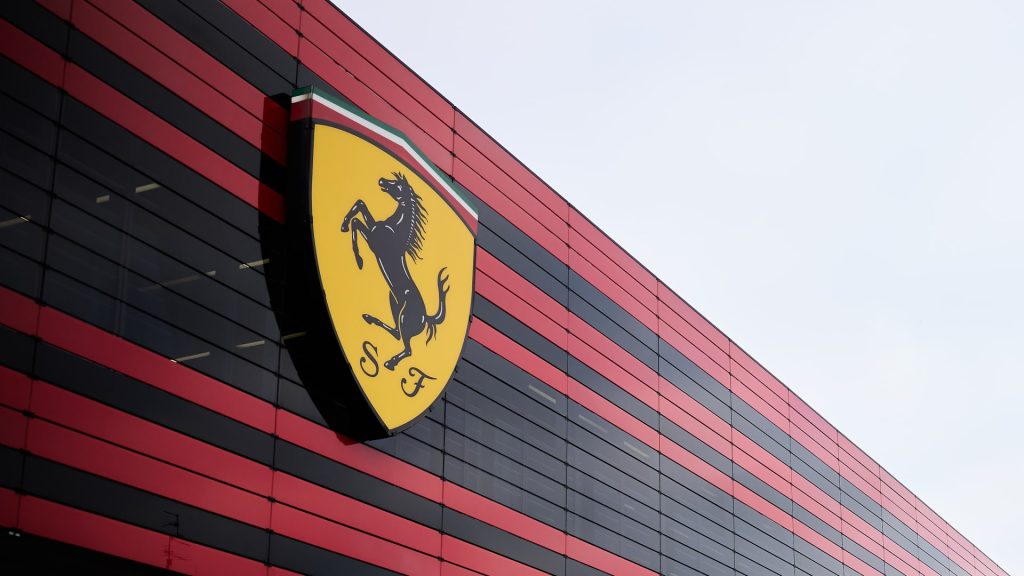Luxury automobile manufacturer Ferrari has reported a robust increase in net profits for the first quarter of 2025, largely driven by strong demand for personalized vehicles. Despite this positive performance, the company has expressed concerns regarding potential impacts from U.S. tariffs imposed on imported European cars. The Maranello-based automaker posted a net profit of 412 million euros, reflecting a 17% increase compared to the same period last year. Ferrari’s leadership remains optimistic but vigilant regarding market fluctuations, especially due to changing trade policies.
| Article Subheadings |
|---|
| 1) Financial Performance Highlights |
| 2) Potential Risks from U.S. Tariffs |
| 3) Industry Comparisons and Analyst Insights |
| 4) Future Plans and Electric Vehicle Debut |
| 5) Market Reactions and Stock Performance |
Financial Performance Highlights
Ferrari’s financial performance for the first quarter of 2025 has exceeded market expectations, showcasing the brand’s resilient demand amidst fluctuating market conditions. The company reported a net profit of 412 million euros (approximately $466.3 million), which represents a 17% increase compared to the same quarter in 2024. This growth can be attributed to the continued appeal of personalized luxury vehicles within the automotive market.
In providing a breakdown of the figures, it was noted that net revenue surged by about 13%, reaching roughly 1.79 billion euros (approximately $2.03 billion). The increase in profits indicates a robust demand for Ferrari’s products, coupled with its exclusive offerings that cater to high-end consumers who prioritize personalization.
Analysts had predicted a net profit closer to 410 million euros; however, Ferrari’s actual financial results surpassed these projections, as stated in a report by economic analysts.
“Another year is off to a great start,”
said CEO Benedetto Vigna. His optimistic viewpoint reflects the company’s unwavering focus on strategic growth and profitability.
Potential Risks from U.S. Tariffs
Ferrari has acknowledged potential risks that may arise from the introduction of U.S. tariffs on imported European automobiles. The automaker’s guidance for 2025 includes a cautionary note regarding a possible reduction of 50 basis points in profitability margin percentages, particularly in relation to the EBITDA (earnings before interest, taxes, depreciation, and amortization) margins.
In early April, U.S. authorities imposed a 25% tariff on automotive imports from the European Union. This decision poses significant implications not only for Ferrari but also other luxury car manufacturers. Ferrari reiterated its stance, emphasizing the need to assess the ongoing changes in trade policy and their effects on financial strategies.
“The 2025 guidance is subject to a potential risk of a 50 basis points reduction on profitability percentage margins,
the company stated.
Despite the challenges posed by tariffs, Ferrari has planned to implement price increases for certain models by 10%, effectively raising the price of a typical vehicle by up to $50,000. This strategic move aims to offset some of the financial burdens imposed by the new tariffs and should help maintain profitability even as costs rise.
Industry Comparisons and Analyst Insights
Ferrari’s performance stands in stark contrast to several of its competitors in the automotive sector. Many European automotive brands have reported disappointing quarterly earnings, leading them to suspend or adjust financial guidance due to uncertainties surrounding the impact of U.S. tariffs. Analysts noted that Stephen Reitman, an analyst at Bernstein, highlighted Ferrari’s unique position amidst this turmoil, stating,
“At a time when many automotive and other companies are suspending guidance due to uncertainties over the impact from U.S. tariffs, Ferrari stands out.”
This differentiation illustrates Ferrari’s ability to navigate collective industry challenges through innovative product offerings and a strong customer base that heavily invests in personalized luxury vehicles. The contrast also emphasizes the brand’s historical reputation for resilience in times of economic fluctuation, further solidifying its market leadership.
Future Plans and Electric Vehicle Debut
Looking forward, Ferrari is set to launch its first all-electric vehicle, the Elettrica, with initial expectations pushing the reveal date into the spring of 2026. The product is positioned to revolutionize Ferrari’s lineup, aligning with global shifts towards sustainability while maintaining the brand’s iconic performance characteristics.
During the quarterly earnings call, Benedetto Vigna articulated that the unveiling of the Elettrica would focus on its ‘technological hub,’ laying the groundwork for its exciting attributes and distinguishing features.
“This is a massive piece of technology, design, and unique features. It will be an exciting journey of discovery,”
Vigna conveyed, indicating that the vehicle promises to embody the essence of a true Ferrari while embracing innovative electric vehicle technology.
The anticipated Elettrica aligns with a larger strategy to evolve Ferrari’s brand identity and maintain a competitive edge in both traditional and emerging automotive markets. With the automotive industry navigating significant changes, this strategic pivot reinforces Ferrari’s commitment to sustainability while enhancing its luxury offerings.
Market Reactions and Stock Performance
The market’s reaction to Ferrari’s latest quarterly performance was mixed, with shares of the company experiencing minor fluctuations. As of early afternoon trading, shares listed on the Milan exchange were down approximately 0.8%, alongside slight declines observed in U.S.-listed shares.
Despite these dips, Ferrari’s stock continues to receive attention from investors who are closely monitoring how forthcoming trade policies impact the company. Notably, as financial analysts continue to evaluate the company’s growth trajectory, Ferrari’s resilience amid turbulent economic conditions keeps it in the public eye.
Moreover, market analysts continue to predict moderated optimism for the luxury automotive sector, especially affecting broader automotive sales dependent on government policies and shifting consumer preferences. Ferrari’s ability to adapt and innovate could serve as a barometer for other luxury brands navigating similar challenges.
